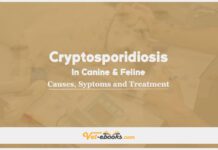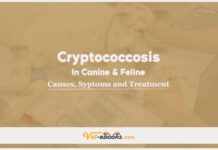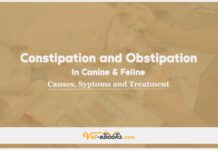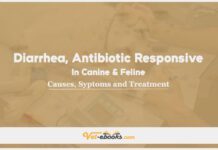Cobalamin Deficiency In Canine and Feline: Causes, Symptoms and Treatment
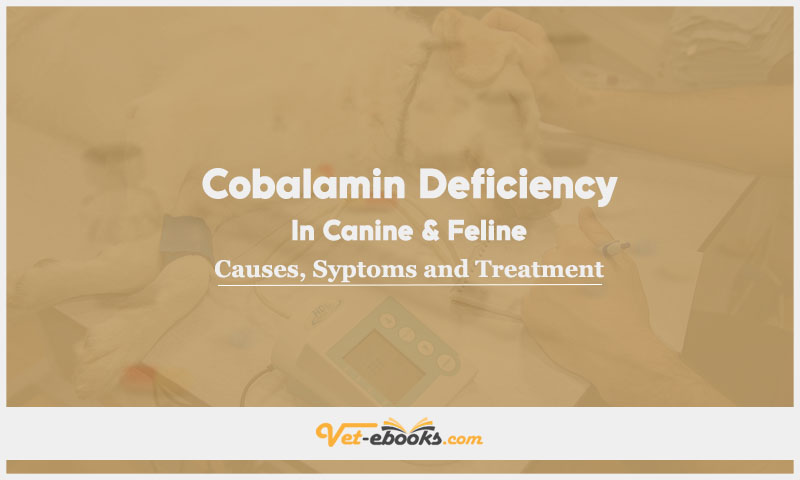
Contents
hide
Overview
- Cobalamin deficiency manifests in animals with impaired cobalamin absorption, wherein the whole reservoir of cobalamin within the body has been depleted.
- Cobalamin has a significant function in betaoxidation, the conversion of specific amino acids, and the synthesis of tetrahydrofolate.
- Cobalamin is vital for various physiological processes, including energy production, amino acid metabolism, and the synthesis of DNA and RNA.
Causes of Cobalamin Deficiency In Canine and Feline
Causes and Risk factors
- Intestinal diseases that affect the distal small intestine, specifically the ileum, include inflammatory bowel disease, food-responsive enteropathy, lymphoma, and other similar conditions.
- Exocrine pancreatic insufficiency (EPI).
- Short bowel syndrome.
- The breeds included in the hereditary analysis are the Chinese Shar-Pei, giant schnauzer, beagle, border collie, and Australian shepherd dog.
- Consumption of a vegan or vegetarian diet without the simultaneous use of supplements.
Pathogenesis of Cobalamin Deficiency In Canine and Feline
Chronic gastrointestinal disease:
- If there is involvement of the ileum in gastrointestinal disease, the severe form of the disease results in impaired absorption of cobalamin due to the degradation of receptors for cobalamin and intrinsic factors in the ileum.
- This leads to cobalamin malabsorption.
- To sustain cellular functioning, cobalamin is being utilized from the body’s resources.
- When the body’s supplies of cobalamin are depleted, a shortage of cobalamin occurs.
Exocrine Pancreatic Insufficiency:
- It is seen that the exocrine pancreas releases intrinsic factor, which is a key part of absorbing cobalamin.
- The digestion of R-protein by pancreatic proteases is necessary to liberate cobalamin and facilitate its absorption.
- Most patients diagnosed with exocrine pancreatic insufficiency (EPI) exhibit secondary dysbiosis in the small intestine.
Short Bowel Syndrome:
It is harder for cobalamin to be absorbed because the ileum is missing. The ileum is where cobalamin is normally absorbed.
Hereditary:
- Cobalamin insufficiency has a hereditary basis, specifically within the Chinese shar-pei population in the United States.
- The mutation has been genetically mapped to chromosome 13; however, the specific mutation responsible has not yet been characterized.
- Previous studies documented the existence of familial cobalamin insufficiency in isolated families of various breeds, such as Giant Schnauzers, Border Collies, and others.
Dietary:
- The long-term consumption of a vegan or vegetarian diet without simultaneous supplementation.
- Cobalamin deficiency manifests in animals with impaired cobalamin absorption, wherein the depletion of all cobalamin reserves within the body leads to cellular-level insufficiency of cobalamin.
- Cobalamin insufficiency is linked to gastrointestinal symptoms, immunodeficiencies, central neuropathies, and peripheral neuropathies.
Symptoms (History & Physical Examination) of Cobalamin Deficiency In Canine and Feline
History
- Chronic enteropathies, or exocrine pancreatic insufficiency, lead to symptoms like diarrhea and weight loss.
- Clinical manifestations associated with immunodeficiency, central nervous system dysfunction, or peripheral neuropathy.
- Chronic enteropathy is characterized by symptoms such as diarrhea, weight loss, vomiting, poor appetite, and other associated manifestations.
- Weight loss, failure to grow, loose stools, steatorrhea, polyphagia, or pica.
- Borborygmus or flatulence.
- Clinical manifestations of central or peripheral neuropathies, such as encephalopathy or seizure activity.
- Clinical symptoms of immunodeficiency, such as repeated septic episodes.
Physical Examination
- Poor hair coat.
- Suboptimal physical state.
- The plantigrade stance, along with other clinical manifestations, serves as an indicative marker of peripheral neuropathy.
Diagnosis of Cobalamin Deficiency In Canine and Feline
1- From History and Physical Examination
2- Diagnostic Procedures
CBC/BIOCHEMISTRY/URINALYSIS
- The observed values may fall within the normal range.
- Decrease in albumin levels in individuals with severe inflammatory bowel disease.
- Anemia, neutrophilia with a left shift, or neutropenia.
- Rubricytes have been observed.
- Hypersegmented neutrophils.
OTHER LABORATORY TESTS
Serum Cobalamin Concentration:
- Serum cobalamin measurement is an indirect indicator of the presence of cobalamin insufficiency.
- The intracellular presence of cobalamin holds greater significance in assessing cobalamin deficiency, thereby requiring the utilization of intracellular cobalamin levels as a more suitable diagnostic test.
- The quantification of cobalamin quantities at the cellular level lacks a straightforward method.
- The assessment of cobalamin content in serum is a straightforward and readily accessible procedure.
- All assays designed to assess serum cobalamin concentrations were originally developed for human use.
- Due to the frequent binding of cobalamin to carrier proteins, it is important to note that not all assays designed for human usage can reliably assess serum cobalamin levels in dogs and cats.
- It is important to evaluate all cobalamin tests for their applicability to canines and felines.
- It is important to define reference intervals that are specific to the laboratory in question.
- Serum cobalamin concentrations that are decreased or fall within the low normal range are regarded as diagnostic of cobalamin deficiency.
- Research investigations on the quantification of methylmalonic acid in the serum of canines and felines have revealed that patients with serum cobalamin concentrations within the lower range of normal values may exhibit cellular cobalamin deficiency.
- Elevated levels of methylmalonic acid in serum and urine have been observed in patients suffering from cobalamin insufficiency.
- The process of analysis using gas chromatography-mass spectrometry is both time-consuming and costly, making it impractical for typical clinical use.
3- Differential Diagnosis
Disorders that can lead to chronic gastrointestinal disease, immunosuppression, central neuropathies, or peripheral neuropathies.
Treatment of Cobalamin Deficiency In Canine and Feline
General
- If the underlying disease process is diagnosed, appropriate treatment should be administered.
- This includes interventions for conditions such as inflammatory bowel disease, exocrine pancreatic insufficiency, cancer, or small intestinal dysbiosis.
- Cobalamin supplementation is the preferred therapeutic approach.
Medications:
Cobalamin supplementation:
- Cyanocobalamin is available in two forms for medical administration: a parenteral solution with a concentration of 1000 μg/mL and oral tablets with a dosage of either 250 μg or 1mg.
- Hydroxocobalamin is administered at a concentration of 1000 μg/mL for parenteral administration.
- Methylcobalamin is administered in the form of 1 mg oral capsules.
- Historically, patients with cobalamin deficiency have received parenteral supplementation, with the most common administration method being subcutaneous injection of cyanocobalamin or, less frequently, hydroxocobalamin.
- Current research indicates that the effectiveness of oral cobalamin supplementation is comparable to that of parenteral cobalamin supplementation, irrespective of the underlying reason.
- The parenteral supplementation technique involves administering injections to cats at a dosage of 250 μg per injection
- Dogs receive varying dosages according to their size, with little dogs receiving 250 μg per injection and big dogs receiving 1500 μg per injection.
- Other animals receive doses that fall within this range.
- Both species go through a regimen of six weekly injections, then one injection a month later.
- The blood cobalamin concentration is reassessed one month following the final dose.
- The oral supplementation approach entails administering a daily dosage of 250 mg to cats.
- Dogs are given a single daily dosage ranging from 250 mg for small dogs to 1500 mg for gigantic dogs.
- Intermediate dosages are administered to other animals.
- In both species, a regimen of daily dosages is administered for a duration of 120 days.
- The serum cobalamin concentration is reassessed two weeks after the final dose.
- Maintain parenteral therapy on a weekly or biweekly basis (or daily for oral medication) if the serum cobalamin levels remain low.
- Parenteral treatment administration should be continued on a monthly or biweekly basis.
- For oral therapy, treatment could be administered every other day.
- If the serum cobalamin levels are supranormal or at the upper end of the normal range, the treatment should be discontinued.
Some Notes:
To prevent cobalamin deficiency, it is recommended to supplement dogs and cats that are fed a vegetarian or vegan diet with cobalamin.
Tip
Do You Want To Increase Your Veterinary Knowledge and Practical Skills?
You Can Now Browse and Download +3000 Books For Veterinary Professionals & Students Online.
Download Veterinary Books

